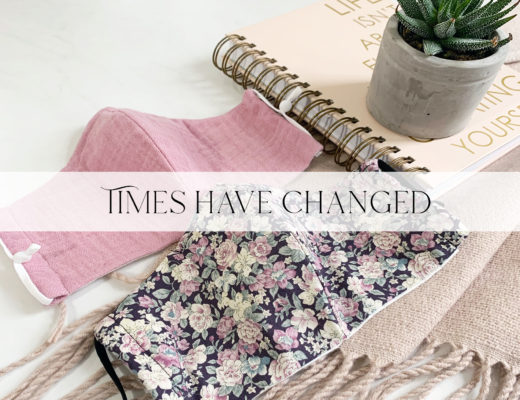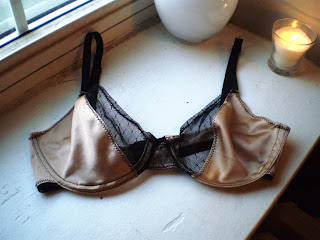As you begin to stitch, gently pull the elastic – you will see that as you stitch, the elastic will start to “wrinkle” the fabric it is attached to. I do not have a real formula for this… After sewing a million pairs of panties, you get the knack for how tight to pull it. If you haven’t sewn elastic like this, you might want to try on a few scraps, or on your muslin first to test out your tension. You do not want to shirr your fabric, you just want to create some tension so that your suit doesn’t ride up or fall down!
When my zig-zag stitch zags to the left, in towards the garment, I am stitching just over the elastic.
When I get to the end, I just overlap my elastic, and zig-zag in place. This is the most easy way to finish your elastic – For me this is a fun summer sewing project, and I am after easy. Alternatively, you can begin by sewing your elastic into a loop and stitching it on, OR sew your elastic on prior to sewing your crotch seam (and leave the top of one side seam open at the neckline). This way, when you sew your crotch seam your raw edges of elastic get hidden in the seam. If you do it this way, I highly recommend top stitching the seam down, or at least doing a bar tack to securely anchor the elastic down. There will be a lot of tension at that seam, and the last thing you want is it unravelling at the beach!










7 Comments
Milenushka
August 15, 2012 at 1:12 pmSexy!!! Thanks a lot for this sew along.. I wanted to ask you in a mail, but never mind- I have already printed out the pattern as it was, do I have to print out everything or just some pages?
sarah.e.norwood@gmail.com
August 15, 2012 at 1:14 pmThe only page that changed was page 11. You'll see on the original pattern that page 11 was mirrored (don't ask me how this even happened!!!). So if you've already printed out the original – just print out page 11 of the new pattern and you should be good go to. To confirm, it is the middle section of the center front piece that had the "issue"
Milenushka
August 17, 2012 at 4:08 pmthank you, dear Sarah
Nicole Runde
August 17, 2012 at 1:21 pmAre we basting it onto the right or wrong side of the fabric? I'm using flat elastic
sarah.e.norwood@gmail.com
August 17, 2012 at 1:25 pmThat is how I do it – I basted it onto the right side with a long zig zag stitch, trim off any excess, fold it under, then top stitch it with a zig zag stitch.
Alternatively, you can baste it onto the right side, serge the edge, then turn under and top stitch with a zig zag stitch. Totally up to you
Nicole Runde
August 17, 2012 at 1:54 pmOkay thanks. I am fairly slow and clumsy at putting in elastic, I haven't done it much. I actually already did some where I zigzag stitched it to the wrong side, thinking I could just fold it under again like a hem and top stitch with a zig zag? Is that bad? Thanks for all your help.
sarah.e.norwood@gmail.com
August 17, 2012 at 2:01 pmIt sounds like your method should work – I don't see why it wouldn't. You'll just end up with covered elastic on the inside, which might actually be nicer!
I am a firm believer that whatever technique is the most comfortable for you, is the one you should use. There is no right or wrong way to sew a garment – do what is easiest for you! That's what I love about sewing